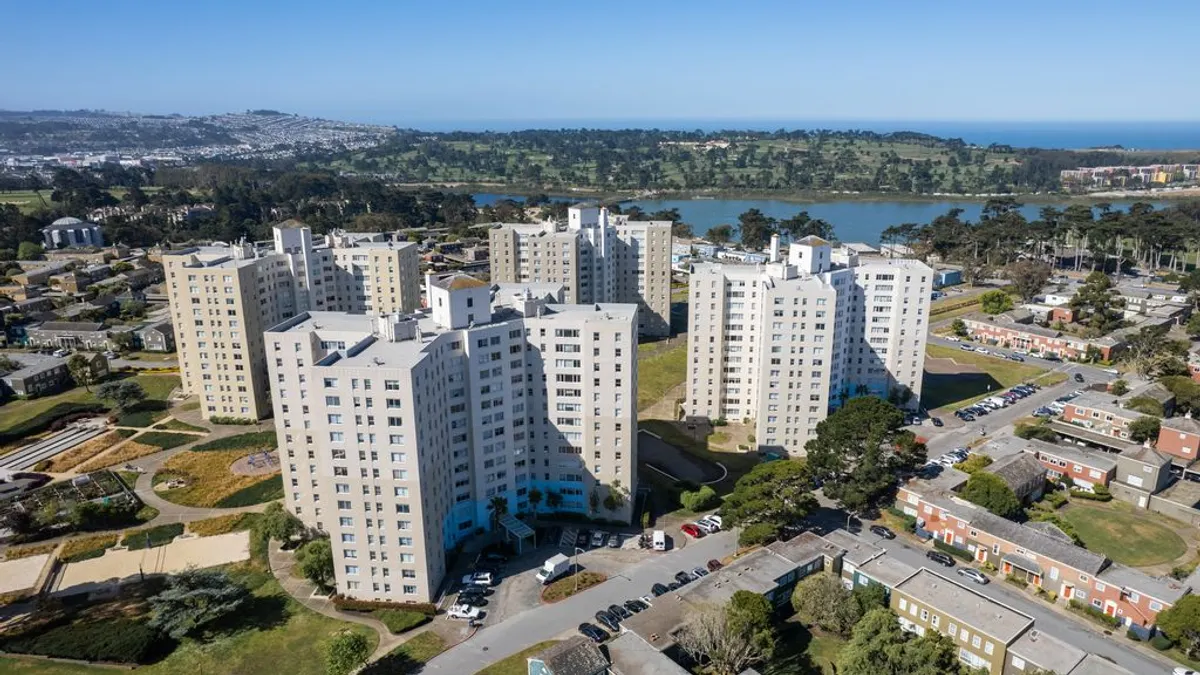Atticus LeBlanc is founder and CEO of PadSplit, a public benefit corporation that creates and manages additional affordable housing units in existing residential properties.
I’ve been hearing a lot about how Wall Street is primarily to blame for the dramatic rise in housing costs. Yes, it’s easy to blame Wall Street for everything, but in this particular instance, it’s neither productive nor accurate.
The reality is that there’s been a shortage of housing options for low-income households in the U.S. for decades. "Nickel and Dimed," a book written by journalist Barbara Ehrenreich in 1998, is essentially about housing, examining how hard-working, low-wage individuals in multiple U.S. markets struggle to survive, mostly because there is no access to affordable housing.
Sound familiar? It should. And the sad truth is, we’re worse off today than we were two decades ago.
I also stumbled across this recommendation recently:
"To increase the production of housing and lower its cost, all State and local legislatures should enact legislation providing that no zoning regulations denying or limiting the development of housing should be deemed valid unless their existence or adoption is necessary to achieve a vital and pressing governmental interest…
Unless a locality can demonstrate that there is a vital and pressing governmental interest associated with the density of development, the market mechanism should be allowed to function without density constraints. Only in this manner can the market respond to economic realities and changing household preferences."
This excerpt was from the President's Commission on Housing … 40 years ago. Considering that 63% of households consist of only one or two people while 12% of housing stock is studio and one-bedroom units, according to Census data, there’s no question that following those recommendations would unlock new supply and improve affordability.
Regardless of your political affiliation, anyone willing to look at the historical data can see the massive housing supply/demand imbalance that has existed for low-income workers for decades. I know everyone in the affordable housing industry feels the same way.
Let me be clear: Discriminatory and nonsensical local zoning is undeniably the root cause of our housing crisis. For the people in the back: Don’t blame Wall Street, blame your local zoning.
Let me lay out how local zoning is the root cause of the problem. Is there a lack of land? No. Is there a lack of builders or housing providers? No. Are these builders having difficulty accessing capital? Definitely not.
Now, if every owner of a single-family home in the country split their house in half, would that increase the amount of housing available? Yes. If we all built an accessory dwelling unit in our backyards, would there be more supply? Yes. If the guy building the McMansion next door converted that home into a duplex or quad house? Yep.
The builder constructing that McMansion next door could actually make more money by dividing it into a duplex or a quad, making housing both more affordable to the end-user and more profitable for themselves.
So why doesn’t this happen? Because it’s not allowed to happen. Current zoning laws, neighborhood covenants and NIMBYs are preventing it from happening just about everywhere.
We’ve had the same problem for decades. It’s come to a breaking point these last couple of years, contributing to a labor shortage as well. You’d think that would be enough to move the needle, but it’s not. NIMBYism is growing.
So I’ll spell it out again: Policymakers, if you want to increase housing supply and affordability, remove zoning barriers that limit growth in housing density. I’m oversimplifying a bit, yes, and changing local zoning may not solve 100% of the problem, but it’ll get you three-fourths of the way there, and it sure as heck is the best place to start.
It makes zero sense that, in most jurisdictions, a 10,000-square-foot home is limited by the same rules for how many people can live in it as a 1,000-square-foot home. It makes zero sense that a single-family, 3,000-square-foot home can take up the same amount of land as a quad house with four families, but a quad isn’t allowed. The road, the sewer, the public infrastructure already exists, and the builders would already have a financial incentive since they’d earn a higher profit margin on a larger number of less-expensive units rather than a smaller number of large, expensive ones.
It’s just so mind-boggling that we’re still allowing outdated, blatantly racist policies, such as narrow definitions of what constitutes a family, to dictate how many people may live legally in a home. Or that we view single-family construction as a better option when it’s less efficient, less profitable and less humane than higher-density alternatives.
So, if you want to find the source of blame for why our housing supply is limited and prices are out of control, don’t waste your time complaining about Wall Street. Instead, call your neighbors and your local elected officials about removing barriers to housing production and better using the land and space we already have.




















